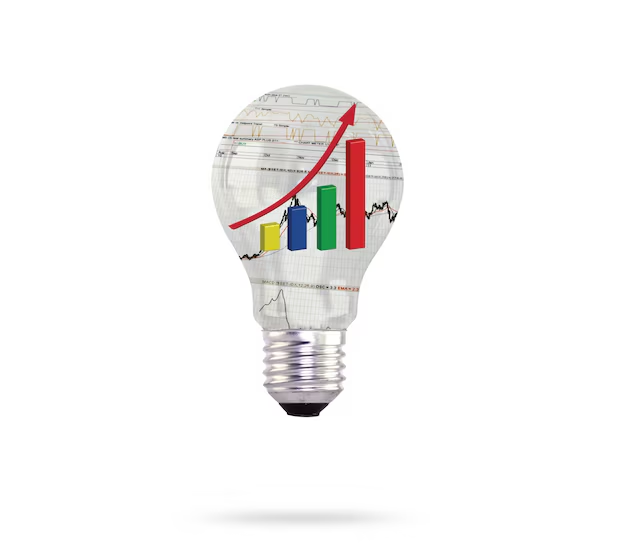Government policies play a critical role in shaping the trajectory of national economies. These policies influence various economic factors, including inflation, unemployment, economic growth, and the distribution of wealth. By designing and implementing strategic fiscal and monetary policies, governments can either stimulate economic growth or curb inflation, creating a dynamic environment that affects businesses, households, and overall economic prosperity. In this comprehensive analysis, we will explore how government policies influence economies and the key ways in which they impact both short-term and long-term economic performance.
Understanding Government Economic Policies
Government economic policies are designed to manage the economy in a way that supports long-term growth, ensures stability, and improves living standards for its citizens. These policies can be broadly categorized into two types: fiscal and monetary policies.
- Fiscal Policy: This involves government decisions regarding taxation and public spending. Governments use fiscal policy to influence demand within the economy. For example, increasing government spending or cutting taxes can stimulate demand, boost economic activity, and reduce unemployment. Conversely, raising taxes or cutting public spending can help control inflation and reduce budget deficits.
- Monetary Policy: Central banks, such as the Federal Reserve in the United States or the European Central Bank, are responsible for monetary policy. This involves regulating the money supply and controlling interest rates to manage inflation, stabilize currency values, and promote economic growth. By adjusting interest rates, central banks influence borrowing costs, which impacts consumer spending and business investments.
Key Government Policies that Shape National Economies
- Taxation Policy: Tax rates on businesses and individuals are crucial in shaping economic behavior. High taxes on businesses can discourage investment, while high personal income taxes may reduce consumers’ disposable income, limiting demand. On the other hand, tax cuts can encourage investment and increase spending, stimulating economic growth. A balanced taxation system is essential to maintain fiscal health and incentivize productivity without creating excessive inequality.
- Monetary Policy and Interest Rates: Central banks influence national economies by manipulating interest rates. Lower interest rates reduce the cost of borrowing, which encourages both consumers and businesses to spend more. However, if interest rates are too low for too long, it may lead to inflation. Conversely, raising interest rates can control inflation, but may also slow down economic growth by making borrowing more expensive.
- Government Spending: Public spending is a powerful tool used by governments to influence economic activity. Investments in infrastructure, education, and healthcare, for instance, not only create jobs but can also improve the productivity of the economy in the long run. During economic downturns, governments often increase spending (through stimulus packages or welfare programs) to stimulate demand and counteract recessions.
- Regulation and Trade Policies: Regulations on industries such as banking, manufacturing, and environmental protection can have significant effects on economic activity. Governments regulate industries to maintain fair competition, protect consumers, and ensure the economy operates smoothly. Trade policies, including tariffs and quotas, shape international trade relations, influencing imports, exports, and overall trade balances.
- Social Welfare Policies: Social policies aimed at reducing poverty, ensuring healthcare access, and providing unemployment benefits help to sustain consumer spending, which is crucial for economic stability. Welfare programs also have long-term effects on a country’s human capital, improving the quality of its workforce and increasing overall productivity.
- Labor Market Policies: Labor policies, including minimum wage laws, employment benefits, and labor unions, influence the supply and demand for labor. These policies have significant impacts on income inequality and workforce participation. Policies that improve worker conditions and wages can lead to increased productivity and consumption, thereby stimulating economic growth.
How Government Policies Influence Economic Growth
Government policies directly impact a country’s economic growth by affecting several key factors:
- Investment Levels: When the government enacts policies that encourage investment—such as tax incentives, low interest rates, or the relaxation of certain regulations—businesses are more likely to invest in capital, technology, and human resources. Higher investment in the economy drives productivity, innovation, and job creation.
- Consumer Confidence: Government policies that reduce uncertainty—such as stable tax rates, predictable fiscal spending, and strong social safety nets—help boost consumer confidence. When consumers feel secure about their economic future, they are more likely to spend, which in turn stimulates economic growth.
- Inflation Control: By adjusting fiscal and monetary policies, governments can control inflation, which has a significant impact on economic stability. Keeping inflation low ensures that the purchasing power of consumers is maintained, encouraging both spending and saving.
- International Trade: Government policies on trade can determine the flow of goods and services between countries, impacting industries like manufacturing and agriculture. Trade policies that promote exports, encourage foreign direct investment, or protect strategic industries can support national economic growth.
7 Frequently Asked Questions (FAQs) About Government Policies and Economies
- How do government policies influence unemployment rates? Government policies that promote economic growth—such as public investment, tax cuts, and lower interest rates—can reduce unemployment by creating jobs. On the other hand, restrictive fiscal policies may slow down job creation.
- What impact do fiscal policies have on inflation? Fiscal policies like increasing government spending or cutting taxes can lead to inflation if demand outpaces supply. Conversely, reducing spending or raising taxes can help control inflation by reducing demand in the economy.
- Can government policies increase income inequality? Yes, depending on how policies are designed. Tax policies, labor market regulations, and social welfare programs can either reduce or exacerbate income inequality, depending on how they are implemented.
- How does trade policy affect national economies? Trade policy impacts a nation’s economy by influencing imports and exports. Tariffs and quotas can reduce trade, affecting the competitiveness of domestic industries, while trade agreements can open up new markets for exports, boosting economic growth.
- Why is monetary policy important for economic stability? Monetary policy helps control inflation and stabilize the currency by regulating interest rates and money supply. A stable currency and low inflation contribute to consumer and business confidence, fostering economic growth.
- Do government regulations help or hinder economic growth? Regulations can help ensure fair competition, protect consumers, and preserve natural resources. However, excessive or poorly designed regulations may hinder innovation, increase business costs, and reduce economic growth.
- How do government social policies impact economic development? Social policies that improve education, healthcare, and social welfare can lead to a more productive workforce and reduce poverty. These policies help sustain consumer demand and contribute to long-term economic development.
Conclusion
Government policies are instrumental in shaping the economic landscape of a nation. By using fiscal and monetary tools, governments can influence everything from investment levels to inflation rates and international trade. Understanding the various policies and their effects helps businesses, consumers, and policymakers make informed decisions about economic strategies.
As economies continue to evolve, government policies must adapt to address challenges such as globalization, technological advancements, and climate change. With the right policies in place, governments can guide their economies toward sustainable growth and greater prosperity for all citizens.
Key Takeaways
- Government policies, both fiscal and monetary, play a pivotal role in shaping national economies.
- Fiscal policy (taxation and government spending) and monetary policy (interest rates and money supply) directly impact inflation, employment, and overall economic stability.
- Trade, regulation, and social welfare policies also influence economic growth, consumer behavior, and workforce development.
- Long-term economic growth depends on balancing policies that encourage investment, control inflation, and promote social equity.

